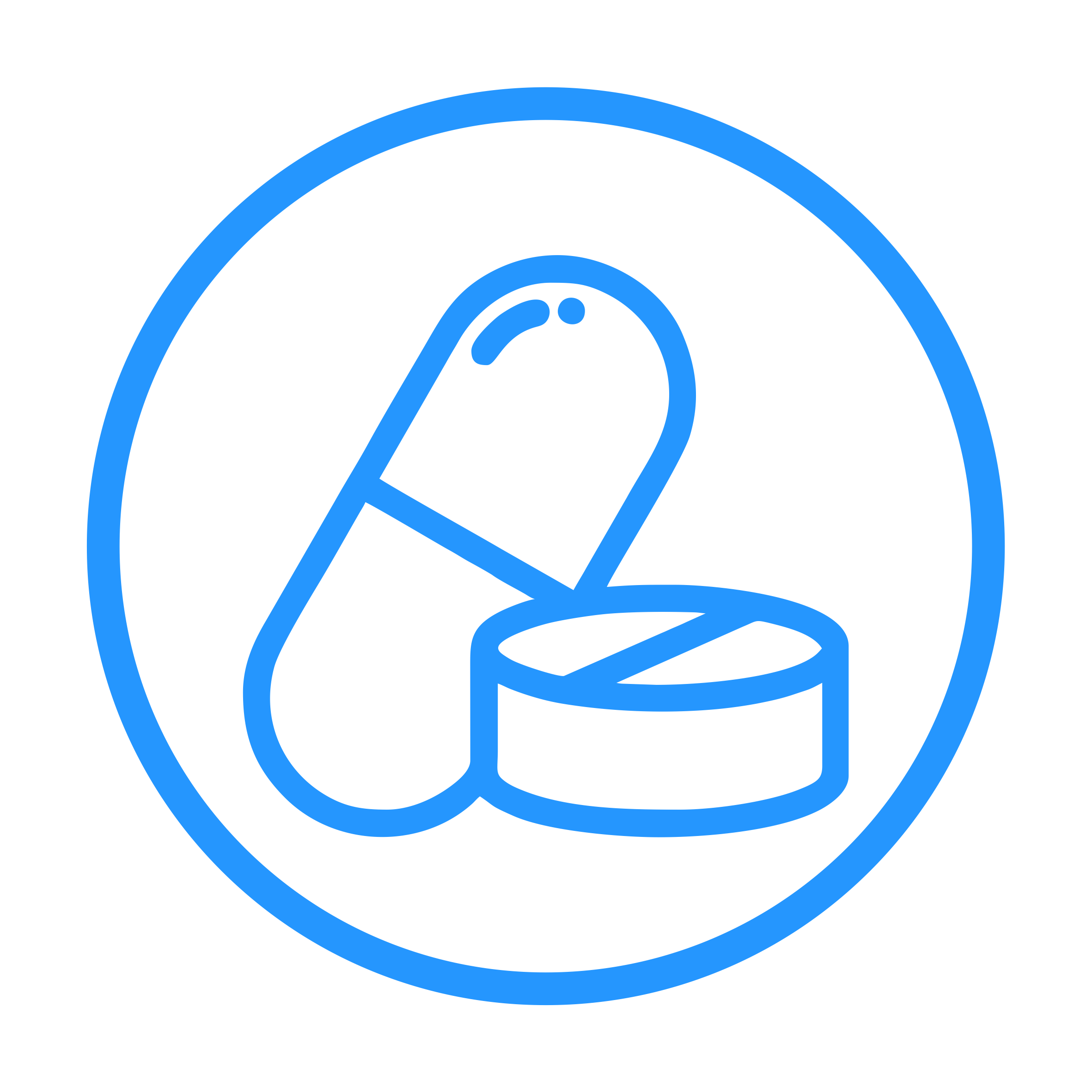Analgesic & Antispasmodics
Analgesics are medications used to relieve pain, working by blocking pain signals sent to the brain or by reducing inflammation. Common types of analgesics include nonsteroidal anti-inflammatory drugs (NSAIDs) such as ibuprofen and naproxen, which relieve pain and inflammation by inhibiting the production of prostaglandins. Acetaminophen is another widely used analgesic that reduces pain and fever but does not have anti-inflammatory effects. Opioids are potent analgesics that work by binding to opioid receptors in the brain and spinal cord, blocking pain signals.
Antispasmodics, on the other hand, are medications used to relieve muscle spasms or cramps. They work by relaxing smooth muscles in the body, particularly those in the gastrointestinal tract or urinary tract. Antispasmodics can help alleviate symptoms associated with conditions such as irritable bowel syndrome (IBS), bladder spasms, and menstrual cramps. Common antispasmodic medications include dicyclomine, hyoscyamine, and peppermint oil.
Formula |
Dosage |
| Tramadol | 50/100/200mg |
| Tramadol+Paracetamol | 37.5+325mg |
| Aceclofenac | 100mg |
| Celecoxib | 100/200mg |
| Etoricoxib | 60/90/120mg |
| Ibuprofen | 200/400mg |
| Mefanamic | 500mg |
| Meloxicam | 7.5mg |
| Naproxen | 500mg |
| Nebumetone | 500/750mg |
| Nimesulide | 50/100mg |
| Paracetamol | 325/500mg |
| Pentoxifylline | 400mg |
TOP Λ
Anti Bacterials
Antibacterials, often referred to as antibiotics, are a class of medications used to inhibit the growth or kill bacteria, thereby treating bacterial infections. These drugs work by targeting specific components of bacterial cells, such as cell walls, protein synthesis machinery, or metabolic pathways, disrupting bacterial growth and replication. Antibacterials are prescribed for various infections, ranging from mild to severe, including respiratory tract infections, urinary tract infections, skin infections, and bacterial meningitis. Common types of antibiotics include penicillins, cephalosporins, macrolides, fluoroquinolones, tetracyclines, and sulfonamides, each with unique mechanisms of action and spectrum of activity against different types of bacteria. It’s crucial to use antibiotics judiciously and as prescribed by healthcare professionals to avoid antibiotic resistance, a growing global health threat. Additionally, patients should complete the full course of antibiotics as directed, even if symptoms improve, to ensure complete eradication of the bacterial infection and prevent recurrence or development of resistance.
Formula |
Dosage |
| Azithromycin | 250/500mg |
| Azithromycin dry sup. | 200/5ml |
| Ciprofloxacin | 250/500mg |
| Ciprofloxacin+Tinidazole | 500/600mg |
| Clarithromycin | 250/500mg |
| Clindamycin | 150/300/600mg |
| Cotrimoxazole | 480/960mg |
| Doxycycline | 100mg |
| Erythromycin Stearate | 250/500mg |
| Gatifloxacin | 200/400mg |
| Levofloxacin | 250/500mg |
| Lincomycin | 250/500mg |
| Moxifloxacin | 400mg |
| Norfloxacin | 400mg |
TOP Λ
Anti Diabetics
Antidiabetic medications, commonly referred to as anti-diabetics, are drugs used to manage blood sugar levels in individuals with diabetes mellitus. These medications work through various mechanisms to either increase insulin production, improve insulin sensitivity in cells, or decrease glucose production in the liver. Types of antidiabetic drugs include insulin, which is essential for individuals with type 1 diabetes and sometimes prescribed for those with type 2 diabetes, as well as oral medications like metformin, sulfonylureas, DPP-4 inhibitors, SGLT-2 inhibitors, and thiazolidinediones. Some medications stimulate insulin secretion, while others enhance insulin action or reduce glucose absorption in the kidneys. Antidiabetic medications are typically prescribed based on the type and severity of diabetes, overall health status, and individual response to treatment. Alongside medication, lifestyle modifications such as healthy eating and regular exercise play crucial roles in managing diabetes effectively. Close monitoring and collaboration with healthcare providers are essential for optimizing treatment outcomes and minimizing complications.
Formula |
Dosage |
| Dapagliflozin | 100mg |
| Empagliflozin | 10/25mg |
| Glibenclamide | 2.5/5mg |
| Gliclazide | 30/80mg |
| Metformin | All Range |
| Pioglitazone HCL | 15/30mg |
| Sitagliptin+Metformin | 50+500mg |
| Rapaglinide | 1mg |
| Vildagliptin | 50/100mg |
| Vildagliptin+Metformin | 50+500mg |
TOP Λ
Anti Psychotic & CNS
Anti Psychotic medications, also known as neuroleptics, are drugs used to manage psychotic disorders such as schizophrenia, bipolar disorder, and severe depression with psychotic features. These medications work by altering the levels of neurotransmitters in the brain, particularly dopamine, which is implicated in the development of psychosis. Antipsychotics are classified into two main categories: typical (first-generation) and atypical (second-generation) antipsychotics. Typical antipsychotics primarily block dopamine receptors in the brain, while atypical antipsychotics also affect serotonin receptors, providing broader efficacy and potentially fewer side effects.
Central Nervous System (CNS) medications encompass a wide range of drugs that act on the central nervous system to treat various neurological and psychiatric conditions. These medications include antidepressants, anxiolytics (anti-anxiety drugs), mood stabilizers, hypnotics (sleep aids), and medications used to manage attention deficit hyperactivity disorder (ADHD) and cognitive disorders such as Alzheimer’s disease.
Both antipsychotic and CNS medications play crucial roles in managing mental health conditions, alleviating symptoms, and improving patients’ quality of life when used judiciously under the supervision of healthcare professionals. Regular monitoring and collaboration with healthcare providers are essential to ensure optimal treatment outcomes and minimize potential side effects.
Formula |
Dosage |
| Betahistine HCL | 8/16/24 mg |
| Citicoline | 500 mg |
| Escitalopram | 10/20 mg |
| Gabapentin | 300/600 mg |
| Levetiracetam | 250/500 mg |
| Paroxetine | 20/40 mg |
| Quetiapine | All Range |
| Vigabtrin | 50 mg |
TOP Λ
ARV Products
Antiretroviral (ARV) products are medications used in the treatment and management of HIV/AIDS. These drugs work by inhibiting the replication of the human immunodeficiency virus (HIV), slowing the progression of the disease, and reducing the viral load in the body. ARV therapy typically consists of a combination of different classes of antiretroviral drugs, including nucleoside reverse transcriptase inhibitors (NRTIs), non-nucleoside reverse transcriptase inhibitors (NNRTIs), protease inhibitors (PIs), integrase inhibitors, and entry inhibitors.
ARV products are prescribed based on factors such as the stage of HIV infection, viral load, drug resistance, and potential side effects. When taken consistently and as prescribed, ARV therapy can significantly improve the quality of life and life expectancy of individuals living with HIV/AIDS. Additionally, ARV medications can reduce the risk of HIV transmission to others, making them a cornerstone of HIV prevention efforts, particularly in populations at high risk of HIV infection.
Formula |
Dosage |
| Abacavir | 300mg |
| Atazanavir | 100/150mg |
| Darunavir | 400/600/800mg |
| Dolutegravir | 50mg |
| Efavirenz | 200/600mg |
| Lamivudine | 100/150/300mg |
| Favipiravir | 150/300mg |
| Nevirapine | 200mg |
| Raltegravir | 400/600 mg |
| Ritonavir | 100mg |
TOP Λ
Betalactums
Beta-lactams are a class of antibiotics characterized by a beta-lactam ring in their chemical structure. This group includes penicillins, cephalosporins, carbapenems, and monobactams. Beta-lactam antibiotics work by inhibiting the synthesis of bacterial cell walls, which are crucial for bacterial survival and integrity. By targeting specific enzymes involved in cell wall synthesis, beta-lactams disrupt bacterial growth and lead to cell lysis, ultimately killing the bacteria. Penicillins, the first beta-lactam antibiotics discovered, are effective against a wide range of bacterial infections and are commonly prescribed for respiratory tract infections, skin infections, and urinary tract infections. Cephalosporins, carbapenems, and monobactams are also widely used for treating various bacterial infections, often in cases where other antibiotics may be less effective due to resistance or bacterial susceptibility patterns. Despite their efficacy, the emergence of antibiotic resistance poses a challenge to the effectiveness of beta-lactam antibiotics, highlighting the importance of judicious antibiotic use and ongoing research into new treatment options.
Formula |
Dosage |
| Amoxicillin Capsules | 250/500mg |
| Amoxicillin Suspension | 125+250mg/5ml |
| Amoxicillin Tablets | 250mg |
| Ampicillin+Cloxacillin Cap. | 250/500mg |
| Ampicillin dispersible Tablets | 250mg |
| Cloxacillin Capsules | 500mg |
TOP Λ
Cardiovasculars
Cardiovascular medications, also known as cardiovascular drugs, are medications used to manage various conditions affecting the heart and blood vessels. These medications play a crucial role in the prevention and treatment of cardiovascular diseases, including hypertension, coronary artery disease, heart failure, arrhythmias, and peripheral vascular disease.
There are several classes of cardiovascular medications, each with its unique mechanisms of action and therapeutic effects. These classes include:
- Antihypertensives: Used to lower blood pressure and reduce the risk of heart disease and stroke.
- Lipid-lowering agents: Used to lower cholesterol levels and reduce the risk of atherosclerosis and cardiovascular events.
- Antiplatelet agents: Used to prevent blood clot formation and reduce the risk of heart attack and stroke.
- Anticoagulants: Used to prevent blood clotting and reduce the risk of thromboembolic events.
- Cardiac glycosides, beta-blockers, calcium channel blockers, and other drugs used to manage heart rhythm disorders and heart failure.
These medications are prescribed based on individual patient factors, including medical history, risk factors, and specific cardiovascular conditions, and are often used in conjunction with lifestyle modifications to optimize cardiovascular health. Regular monitoring and adherence to medication regimens are essential for achieving optimal therapeutic outcomes and reducing the risk of cardiovascular complications.
Formula |
Dosage |
| Amlodipine | 5/10mg |
| Amlodipine Besylate + Lisinopril | 5+5mg |
| Amlodipine + Valsartan + HCT | 10+160+25mg |
| Atorvastatin | 10/20mg |
| Atorvastatin + Ezetimibe | 10+10mg |
| Atorvastatin + Fenofibrate | 10+160mg |
| Bosentan | 62.5/125mg |
| Clopidogrel + Aspirin | 75+75mg |
| Digoxin | 250mg |
TOP Λ
Cephalosporins
Cephalosporins are a class of broad-spectrum antibiotics used to treat bacterial infections caused by susceptible organisms. They belong to the beta-lactam group of antibiotics, similar to penicillins, and work by inhibiting bacterial cell wall synthesis. Cephalosporins are classified into generations based on their spectrum of activity and resistance to bacterial enzymes.
First-generation cephalosporins, such as cefazolin, primarily target Gram-positive bacteria and are often used to treat skin and soft tissue infections. Second-generation cephalosporins, including cefuroxime, have broader activity against both Gram-positive and some Gram-negative bacteria, making them suitable for respiratory and urinary tract infections. Third-generation cephalosporins, like ceftriaxone and cefotaxime, have increased activity against Gram-negative bacteria and are commonly used for severe infections such as pneumonia and meningitis. Fourth-generation cephalosporins possess extended coverage against Gram-negative bacteria, while fifth-generation cephalosporins exhibit activity against multidrug-resistant organisms, making them valuable options for complicated infections. Despite their efficacy, cephalosporins may cause allergic reactions and antibiotic resistance, requiring cautious use and monitoring.
Formula |
Dosage |
| Cephradine Cap. | 250/500mg |
| Cefadroxil Cap. | 500 mg |
| Cefdinir Cap. | 100/300mg |
| Cephalexin Cap. | 250/500mg |
| Cefixime Cap. | 200/400mg |
| Cefaclor Cap. | 250/500mg |
| Ceftibutin Cap. | 400mg |
| Ceftriaxone Sodium Inj. | All Range |
| Cefepime Inj. | All Range |
| Cefoperazone Inj. | All Range |
| Cefoperazone + Salbactum | All Range |
TOP Λ
Contrast Media
Contrast Media (CM) are substances used in medical imaging to enhance the visibility of tissues and organs during diagnostic procedures such as X-rays, CT scans, MRI scans, and ultrasound. These agents work by altering the contrast between different structures within the body, making them more distinguishable on imaging scans. There are various types of contrast media, including iodine-based agents for X-rays and CT scans, gadolinium-based agents for MRI scans, and microbubble agents for ultrasound imaging. Contrast media are typically administered orally, intravenously, or directly into the body part being examined, depending on the imaging modality and area of interest. By improving image clarity and contrast, contrast media assist healthcare professionals in diagnosing a wide range of conditions such as tumors, infections, vascular abnormalities, and inflammation. However, their use may carry risks, particularly in individuals with certain health conditions or allergies, necessitating careful consideration and monitoring by healthcare providers to ensure patient safety.
Formula |
Dosage |
| Lopamidol Inj | 300/370mg |
| Lohexol Inj | 240/300/350mg |
| Gadoteric acid | 0.5 mmol |
| Gadobutrol Inj | 1 mmol |
TOP Λ
Gastrology
Formula |
Dosage |
| Bisacody | 5 mg |
| Cimetidine | 200/400 mg |
| Domperidone 1 Omg | 20/10 mg |
| Esomeprazole & Domperidone | 10 mg |
| Hyoscine Butylbromide | 10 mg |
| Lansoprazole | 30 mg |
| Loperamide 2mg | 2 mg |
| Omeprazole + Domperidone | 20/10 mg |
| Ondansetron | 4/8 mg |
| Pantoprazole | 40 mg |
| Rabeprazole + Domperidone | 20+10 mg |
| Rabeprazole Sodium | 10/20/40 mg |
TOP Λ
Immunosuppressants
Immunosuppressants are medications that suppress or dampen the activity of the immune system. They are primarily used to prevent the body from rejecting transplanted organs or to manage autoimmune diseases, where the immune system mistakenly attacks the body’s own tissues. These medications work by inhibiting the immune response, reducing inflammation, and decreasing the activity of immune cells such as T cells and B cells.
In the context of organ transplantation, immunosuppressants are essential to prevent the recipient’s immune system from recognizing and attacking the transplanted organ as foreign tissue. Commonly prescribed immunosuppressants include corticosteroids, calcineurin inhibitors (such as tacrolimus and cyclosporine), antimetabolites (such as mycophenolate mofetil and azathioprine), and biological agents (such as monoclonal antibodies).
However, the use of immunosuppressants increases the risk of infections and other complications, and long-term use requires careful monitoring to balance the benefits of preventing rejection with the potential side effects and risks associated with immunosuppression.
Formula |
Dosage |
| Azathioprine | 50/100mg |
| Dexamethasone | 0.5/4/8mg |
| Everolimus | 0.75/5/10mg |
| Sirolimus | 1mg |
| Tacrolimus Cap. | 0.5/1/5mg |
TOP Λ
Nephrology & Urology
In Nephrology and Urology, medications play a crucial role in managing a variety of conditions affecting the kidneys, urinary tract, and male reproductive system. In nephrology, medications are often prescribed to treat conditions such as chronic kidney disease, hypertension, electrolyte imbalances, and complications associated with kidney failure. Common medications include angiotensin-converting enzyme (ACE) inhibitors, angiotensin II receptor blockers (ARBs), diuretics, phosphate binders, and erythropoiesis-stimulating agents (ESAs).
In urology, medications are used to address urinary tract infections, kidney stones, urinary incontinence, benign prostatic hyperplasia (BPH), erectile dysfunction, and prostate cancer, among other conditions. Examples of urological medications include antibiotics for treating infections, alpha-blockers and 5-alpha-reductase inhibitors for managing BPH symptoms, phosphodiesterase inhibitors for erectile dysfunction, and hormone therapy for prostate cancer.
These medications are prescribed based on the specific condition, its severity, and individual patient factors, and they are often used in conjunction with other treatment modalities such as lifestyle modifications, minimally invasive procedures, or surgery to achieve optimal outcomes. Regular monitoring and adjustments to medication regimens are essential to ensure effectiveness and minimize side effects.
Formula |
Dosage |
| Cinacalcet | 30/60/90mg |
| Deferasirox | All Range |
| Febuxostat | 40/80mg |
| Finasteride | 1/5mg |
| Sevelamer Carbonate | 400/800mg |
| Sevelamer Hydrochloride | 400/800mg |
| Tamsulosin + Dutasteride | 400+500mcg |
| Tamsulosin HCL | 400mcg |
TOP Λ
Steroidal Anti Inflammatory
Steroidal Anti-Inflammatory medications, also known as corticosteroids or simply steroids, are powerful drugs used to reduce inflammation and suppress the immune system’s response. These medications mimic the effects of natural hormones produced by the adrenal glands, particularly cortisol. Steroidal anti-inflammatories work by inhibiting the production of inflammatory substances and suppressing the activity of immune cells involved in the inflammatory response.
Steroidal anti-inflammatories are prescribed to manage various inflammatory conditions, including rheumatoid arthritis, asthma, inflammatory bowel disease, and allergic reactions. They are also used to treat certain skin conditions, such as eczema and psoriasis, and to alleviate symptoms of certain cancers.
Despite their effectiveness, long-term use of steroidal anti-inflammatories can lead to adverse effects, including increased susceptibility to infections, osteoporosis, weight gain, diabetes, and adrenal suppression. Therefore, these medications are typically prescribed at the lowest effective dose for the shortest duration possible, and patients are closely monitored for potential side effects.
Formula |
Dosage |
| Betamethasone | 0.5mg |
| Deflazacort | 1/6/18/30mg |
| Dexamethasone | 0.5/1/4/8mg |
| Prednisolone | 5/10mg |
TOP Λ
Didn’t find what you were looking for? Send us a quick message, and we’ll reach out to you.
Can’t find what you’re looking for? Share your email with us, and we’ll quickly provide the information you need. Your satisfaction is our top priority, and we’re here to help with any questions or concerns. We are dedicated to exceptional service and ensuring you have all the details you need. Additionally, S.B. Pharma is constantly pursuing new product innovations and taking proactive steps to make the latest pharmaceutical products available to our customers. Thank you for choosing S.B. Pharma.




